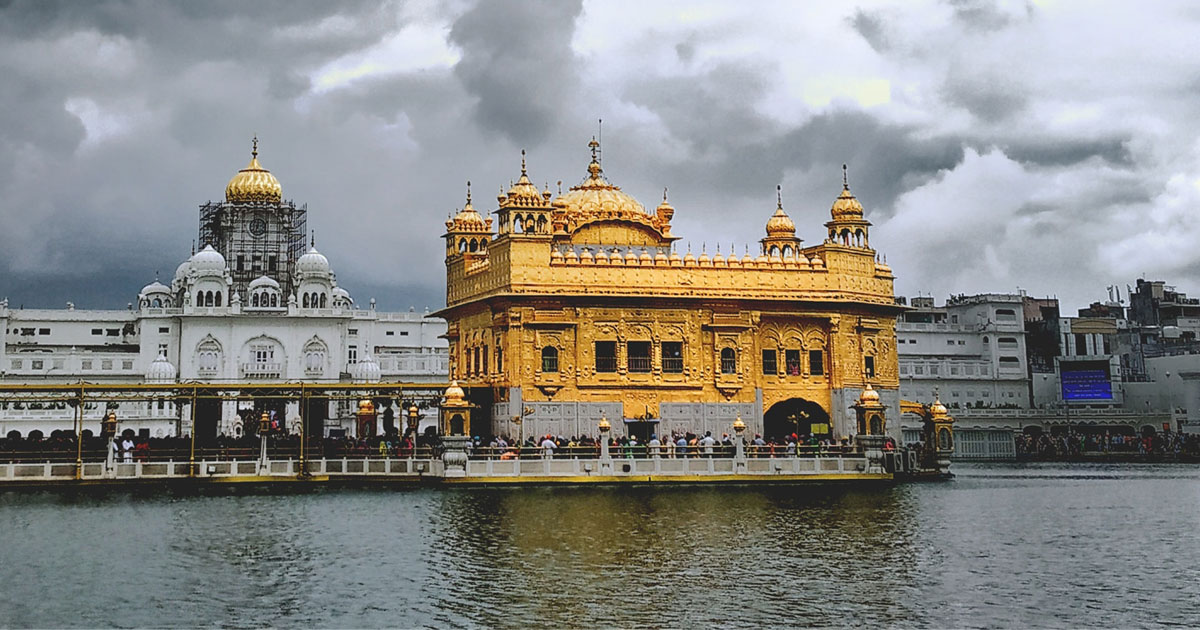The Golden Temple, also known as Harmandir Sahib, is the most revered shrine in Sikhism and one of the most iconic spiritual destinations in India. Located in the heart of Amritsar, Punjab, this temple is not just a place of worship but a symbol of peace, equality, and cultural heritage. Every year, millions of devotees and tourists from around the world visit this spiritual haven to seek blessings, witness its stunning architecture, and experience the serene atmosphere.
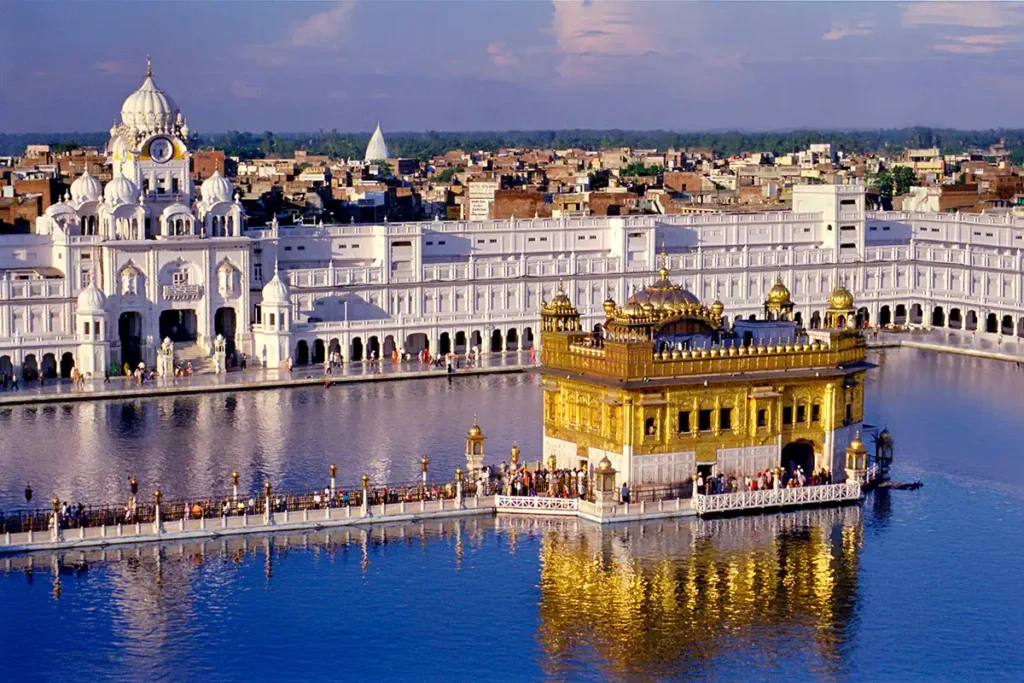
History of the Golden Temple
The Golden Temple was founded by Guru Ram Das, the fourth Sikh Guru, and completed by Guru Arjan Dev Ji in the late 16th century. It was designed to be a central place of worship for Sikhs and built with four entrances, symbolizing openness and acceptance for people of all faiths. The temple’s gold-plated structure and the sacred pool around it, called the Amrit Sarovar, add to its divine charm and architectural brilliance.
Key Historical Facts:
- Founded: 1581 AD by Guru Ram Das Ji
- Completed: 1604 AD by Guru Arjan Dev Ji
- Special Feature: Houses the Guru Granth Sahib, the holy scripture of Sikhism
- Significance: Symbol of equality, humility, and peace
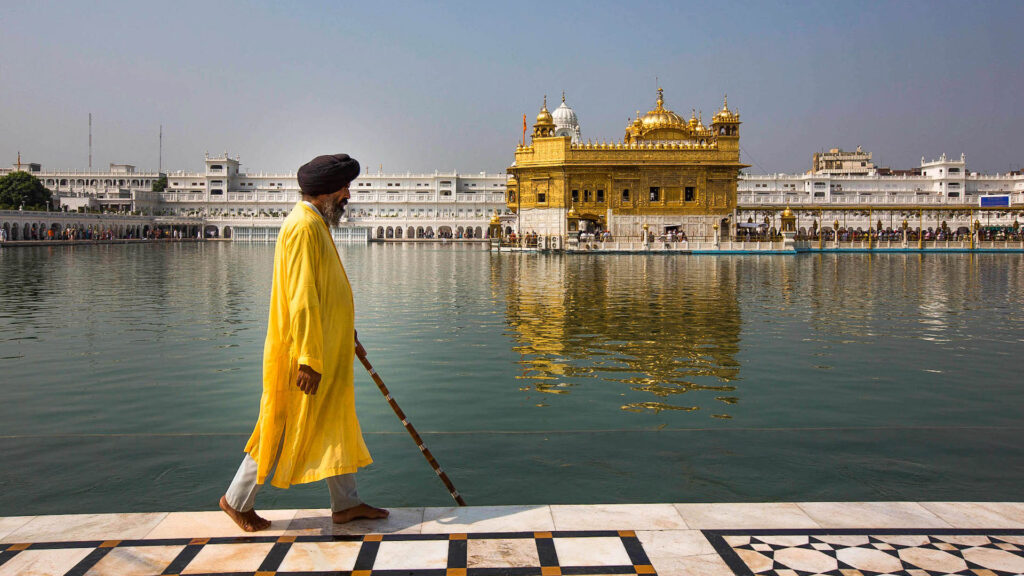
Architecture and Design
The Golden Temple is a masterpiece that blends Sikh, Hindu, and Islamic architectural styles. Its main structure is covered with 24-karat gold, giving it the iconic name “Golden Temple.” The surrounding Amrit Sarovar or holy tank reflects the temple’s golden façade, creating a mesmerizing view, especially at sunrise and sunset.
Architectural Highlights:
- Golden Dome: Shaped like an inverted lotus, symbolizing purity and detachment
- Marble Work: Intricate designs and carvings made of white marble
- Bridge: A marble causeway called Guru’s Bridge connects the temple to the main complex
- Holy Pool: Devotees often take a dip in the Amrit Sarovar, believed to cleanse sins
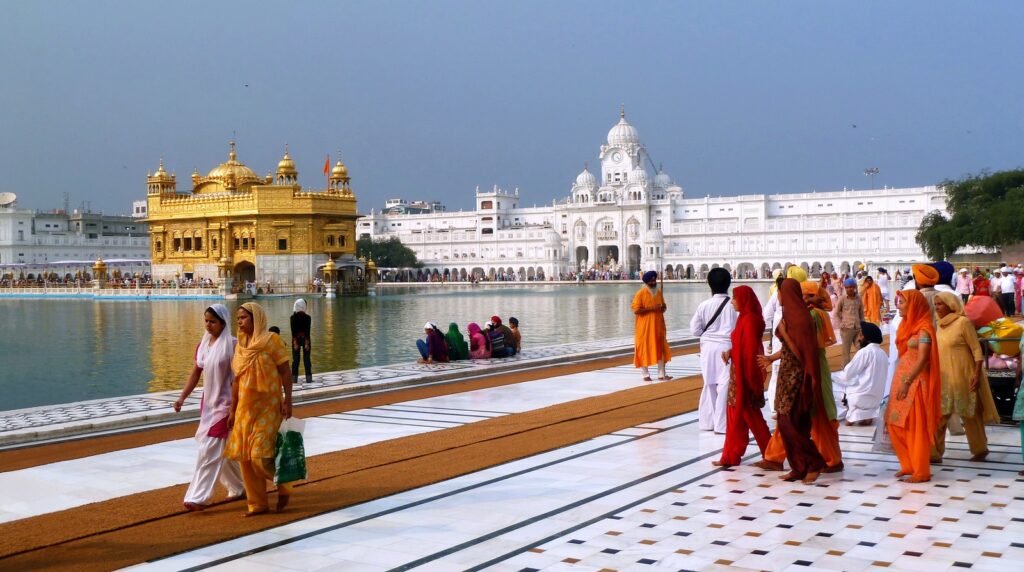
Spiritual Significance
The Golden Temple is not just a tourist attraction; it is a spiritual hub. Devotees visit to meditate, chant prayers, and participate in the Kirtan (devotional singing of hymns). The temple embodies Sikh principles of equality, community service, and devotion.
Spiritual Experiences:
- Guru Granth Sahib Darshan: Listening to the holy scripture being read aloud
- Kirtan: Continuous devotional singing in the main hall
- Langar: Free community kitchen serving meals to thousands daily, representing equality and service
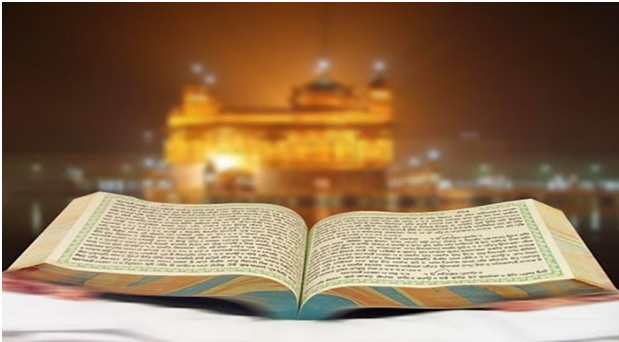
Visiting the Golden Temple
Timings: The temple is open 24 hours, and the best time to visit is early morning or evening to witness the stunning reflection of the golden dome in the holy pool.
Dress Code: Modest clothing is required. Cover your head and remove footwear before entering the temple complex.

Nearby Attaractions
Jallianwala Bagh
Distance from Golden Temple: ~1 km (5–10 minutes walk)
Overview:
Jallianwala Bagh is a historic garden memorial that commemorates the tragic Jallianwala Bagh massacre of 1919. During British rule, hundreds of unarmed civilians were killed, making it one of India’s most painful and significant events in the struggle for independence. Visiting Jallianwala Bagh allows travelers to reflect on India’s colonial past while witnessing the memorial’s architecture.
Highlights:
- Martyrs’ Memorial: Sculptures and plaques honoring the lives lost.
- Bullet Marks on Walls: Some walls still bear marks from the gunfire, preserved for historical significance.
- Central Flame: Symbolizes the eternal remembrance of the martyrs.
- Museum: Provides detailed accounts, photographs, and artifacts related to the massacre.
Tips for Visitors:
- Walk slowly and absorb the history; photography is allowed, but maintain respect.
- Best time to visit: Early morning to avoid crowds and enjoy a quiet reflection.

Partition Museum
Distance from Golden Temple: ~1.5 km
Overview:
The Partition Museum is a unique and immersive museum dedicated to the Partition of India in 1947. It captures the personal stories, struggles, and resilience of those affected by one of the largest human migrations in history.
Highlights:
- Personal Artifacts: Clothes, diaries, letters, and household items from partition survivors.
- Oral Histories: Stories narrated through recordings and interactive exhibits.
- Historical Context: Helps visitors understand the geopolitical and human aspects of partition.
- Cultural Displays: Art, photographs, and paintings that reflect Punjab’s pre- and post-partition life.
Tips for Visitors:
- Allocate at least 2–3 hours to explore fully.
- Audio guides are available for a more immersive experience.
- Combine with a visit to Jallianwala Bagh as both sites are historically connected.
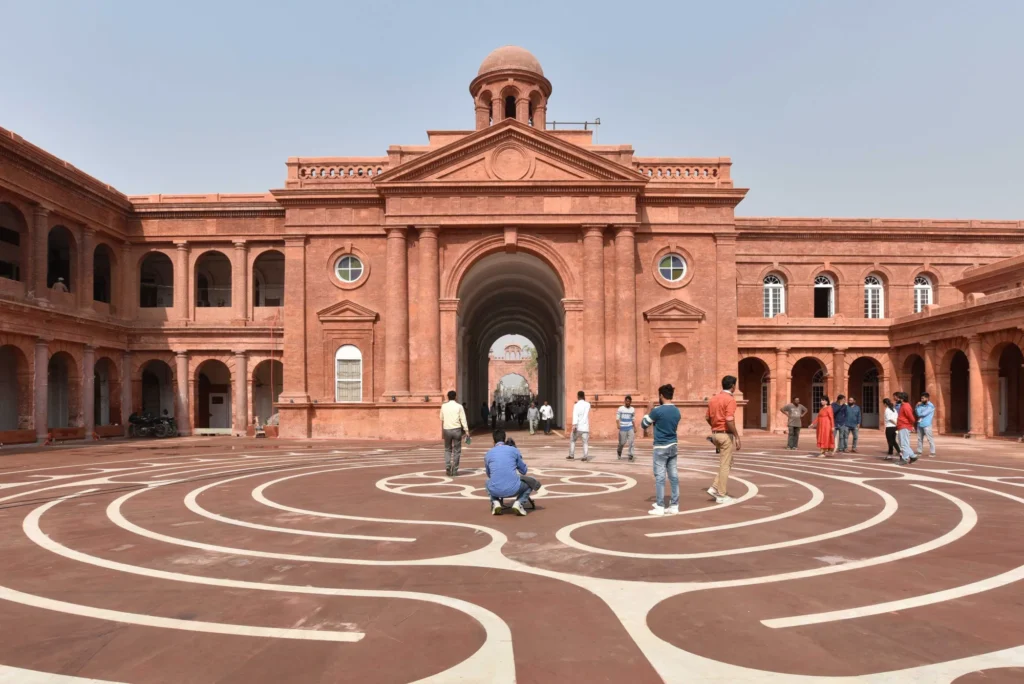
Wagah Border Ceremony
Distance from Golden Temple: ~28 km (about 45–50 minutes by car)
Overview:
The Wagah Border is the ceremonial border between India and Pakistan, known for its daily flag-lowering ceremony, also called the Beating Retreat Ceremony. This ceremony is a spectacular display of military discipline, patriotism, and synchronized marching.
Highlights:
- Border Ceremony: Watch the ceremonial parade and flag lowering with energetic choreography.
- Patriotic Experience: Flags, music, and chants enhance the patriotic atmosphere.
- Sunset Timing: Arrive 1 hour early for the best view of the ceremony at sunset.
- Souvenirs & Photography: Local vendors sell memorabilia related to India-Pakistan border traditions.
Tips for Visitors:
- Reach early, especially during weekends and national holidays.
- Dress comfortably and carry water; seating is on benches or standing areas.
- Combine this visit with a morning tour of the Golden Temple for a full-day experience.
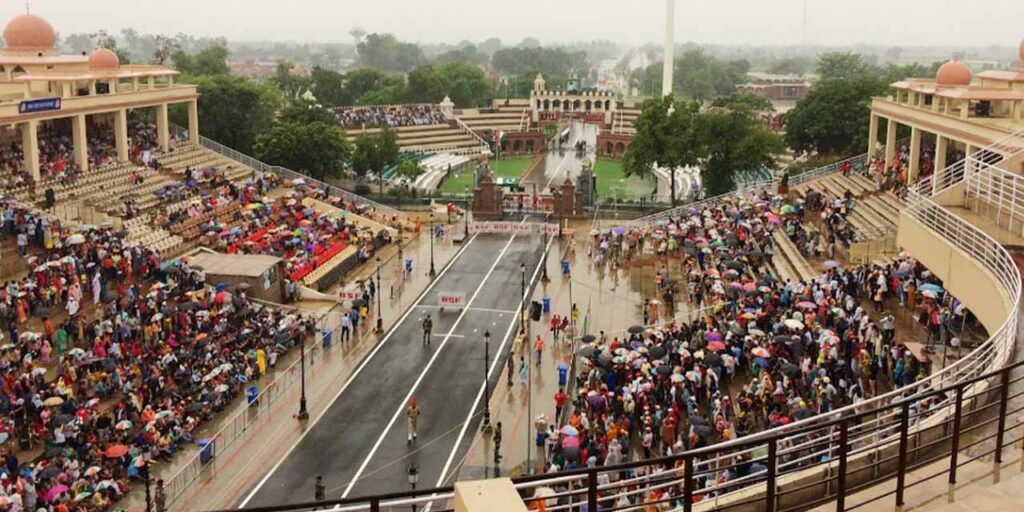
Durgiana Temple
Distance from Golden Temple: ~1.5 km
Overview:
Often called the Silver Temple, Durgiana Temple is dedicated to Goddess Durga. Architecturally, it resembles the Golden Temple, with a large water tank surrounding it and a central structure made of silver-plated materials. It’s an excellent example of Hindu temple architecture in Punjab.
Highlights:
- Similar Architecture: Features a central pool and golden-colored domes, reminiscent of Harmandir Sahib.
- Spiritual Significance: Worshippers seek blessings for prosperity, health, and spiritual well-being.
- Cultural Experience: Offers insight into Hindu rituals and festivals in Punjab.
Tips for Visitors:
- Early morning is ideal for a peaceful visit.
- Photography is allowed in the outer area; maintain respect inside the sanctum.
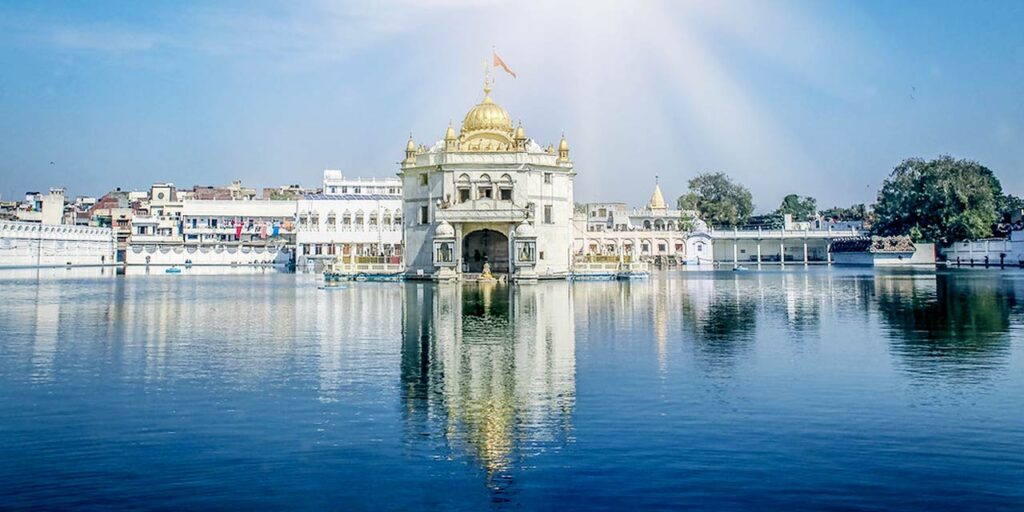
Maharaja Ranjit Singh Museum
Distance from Golden Temple: ~2 km
Overview:
The Maharaja Ranjit Singh Museum is housed in the historic Ram Bagh Palace, once home to the famous Sikh ruler Maharaja Ranjit Singh. This museum showcases the life, battles, and achievements of the Lion of Punjab, providing a deep dive into Sikh history.
Highlights:
- Artifacts: Weapons, paintings, coins, and personal belongings of the Maharaja.
- Architecture: Colonial-era palace blended with Sikh heritage.
- Gardens: Beautifully maintained gardens surrounding the museum.
Tips for Visitors:
Guided tours are available to understand historical context better.
Allocate 1–2 hours to explore the exhibits fully.
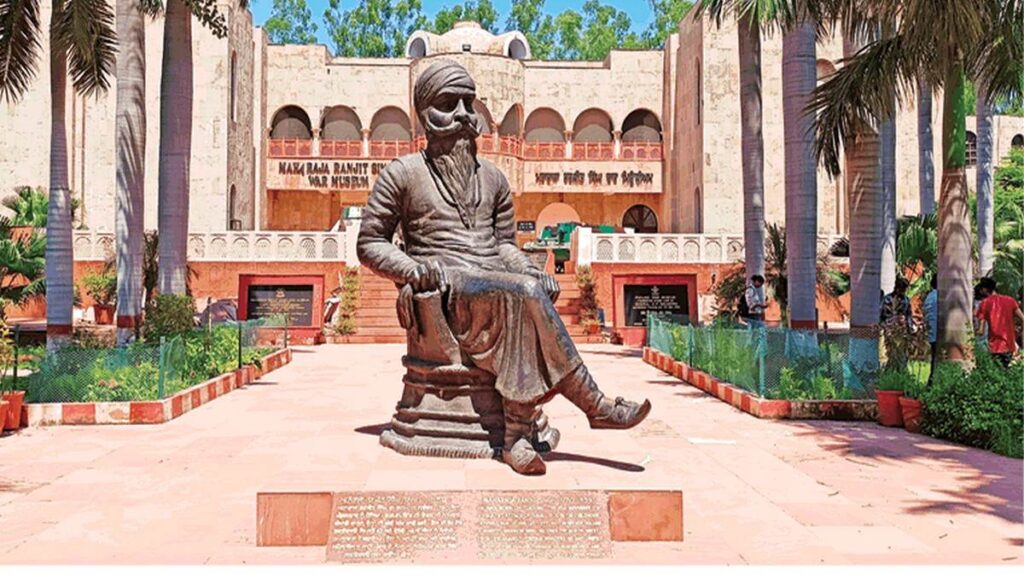
Tips for Pilgrims and Tourists
- Stay Nearby: Amritsar has many hotels and guesthouses within walking distance of the temple.
- Respect Traditions: Cover your head, maintain silence in the inner sanctum, and avoid photography in restricted areas.
- Enjoy Langar: Participate in the free community meal for a unique cultural experience.
- Plan for Peak Seasons: Festivals like Guru Nanak Jayanti attract huge crowds, so book accommodations early.
- Photography: Capture the temple’s exterior, but respect the rules inside the sanctum.
Fun Facts About the Golden Temple
- The temple has four entrances, welcoming people from all directions, symbolizing openness and inclusivity.
- The gold plating was donated by Maharaja Ranjit Singh in the early 19th century.
- The Amrit Sarovar is believed to have healing properties for both the body and mind.
- Free meals at the Langar serve over 100,000 people daily, making it one of the largest free kitchens in the world.
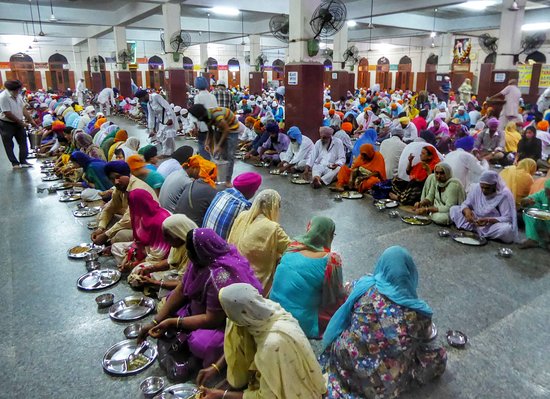
FAQ
Q1: What is the best time to visit the Golden Temple?
A: The best time to visit the Golden Temple is between October and March when the weather is pleasant. Early mornings offer a serene experience with fewer crowds.
Q2: How can I reach the Golden Temple in Amritsar?
A: The temple is easily accessible by road, rail, and air. The nearest airport is Sri Guru Ram Dass Jee International Airport, and Amritsar Junction railway station is just 2 km away.
Q3: Are there any entry fees for the Golden Temple?
A: No entry fees are required to visit the Golden Temple. However, donations for community services like the Langar are welcome.
Q4: Can tourists participate in the Langar?
A: Yes! The Langar at the Golden Temple serves free meals to thousands daily, and visitors are welcome to join and experience the spirit of service.
Q5: What are the top nearby attractions to visit along with the Golden Temple?
A: Popular nearby attractions include Jallianwala Bagh, Partition Museum, Wagah Border, Durgiana Temple, Maharaja Ranjit Singh Museum, Gobindgarh Fort, and Hall Bazaar.
Q6: Is photography allowed inside the Golden Temple?
A: Photography is restricted inside the sanctum but allowed in the outer areas and the temple complex. Always respect the rules and maintain decorum.
Q7: How long should I plan to explore the Golden Temple and nearby attractions?
A: A 1–2 day visit is ideal for exploring the Golden Temple, Jallianwala Bagh, Partition Museum, and Durgiana Temple. A full-day trip is recommended for Wagah Border.
Q8: Are there any accommodation options near the Golden Temple?
A: Yes, Amritsar offers a variety of hotels, guesthouses, and ashrams within walking distance of the Golden Temple, catering to all budgets.
Q9: What should I wear when visiting the Golden Temple?
A: Visitors should wear modest clothing. Cover your head with a scarf or cloth and remove footwear before entering the temple premises.
Q10: Can I hire a guide for visiting nearby attractions?
A: Yes, local guides are available at most attractions, providing historical insights and cultural context to enhance your experience.

